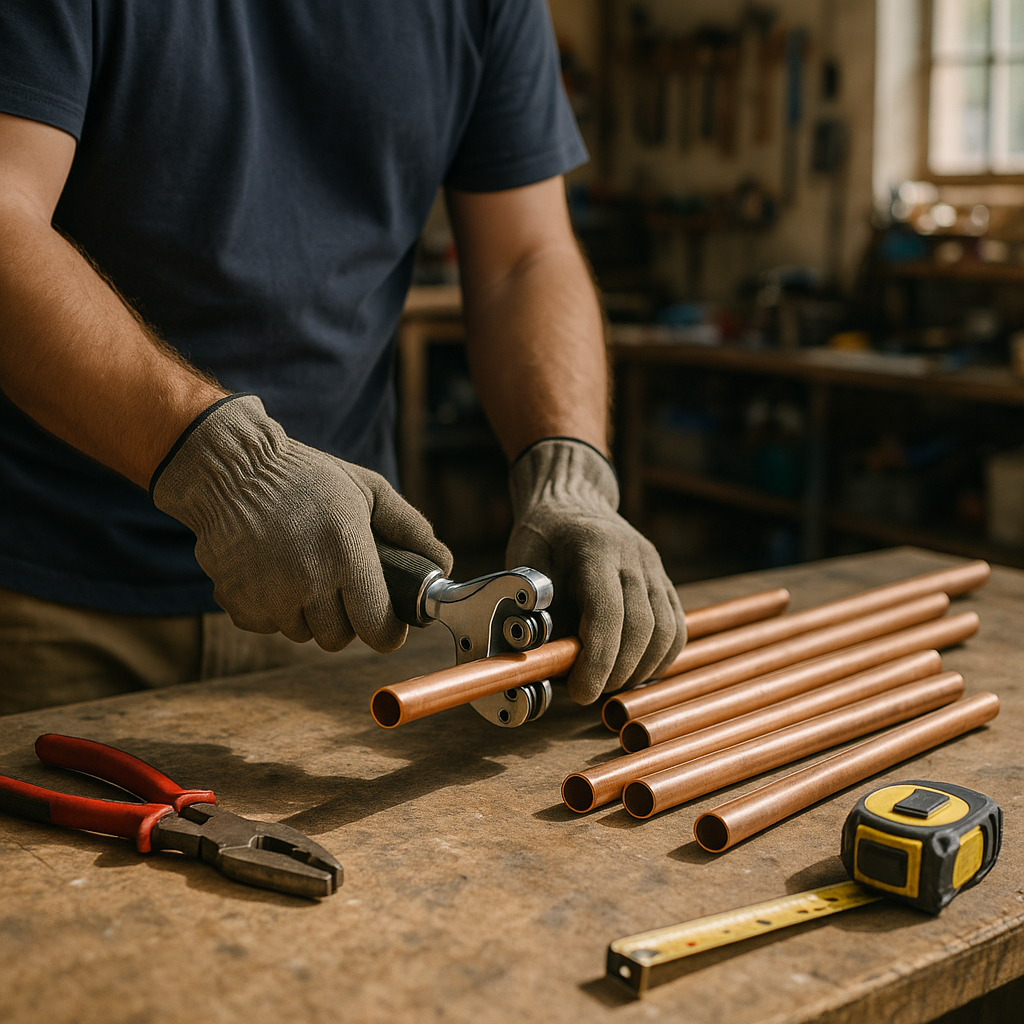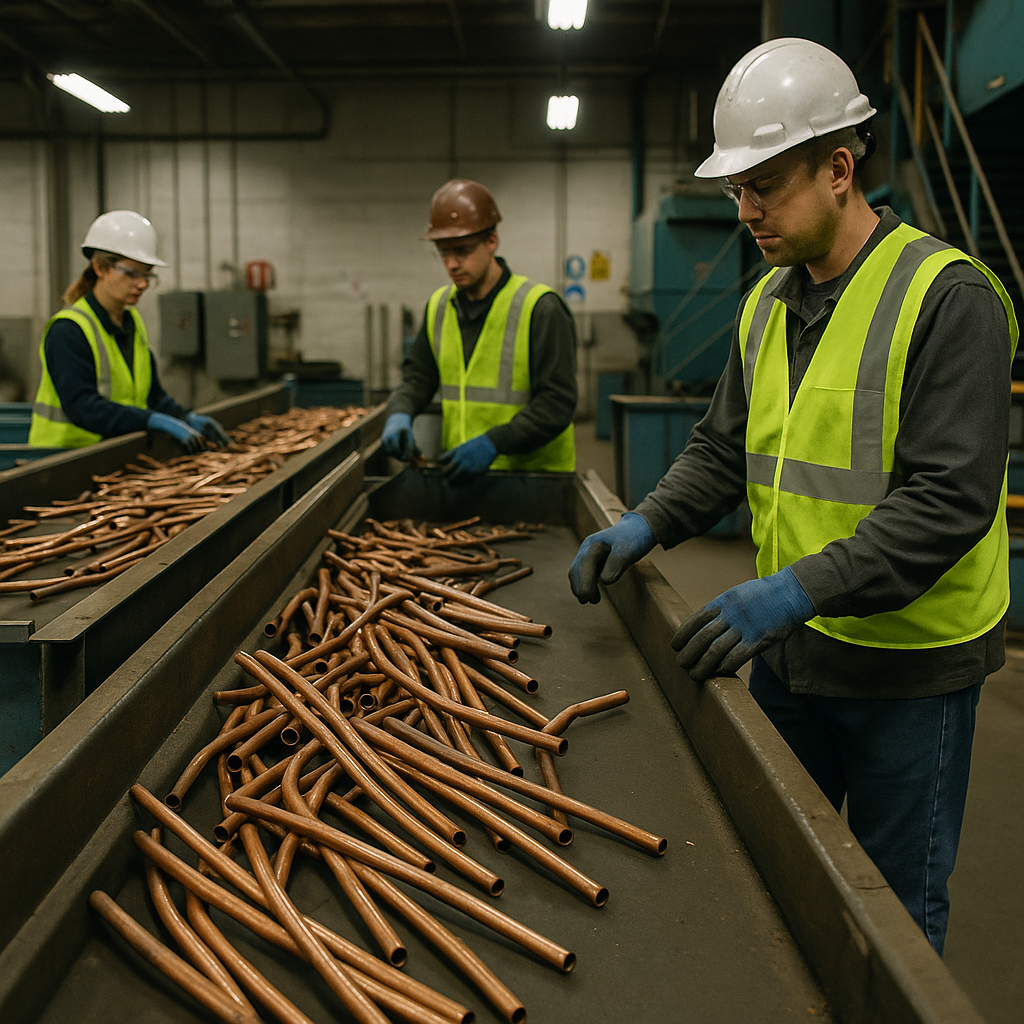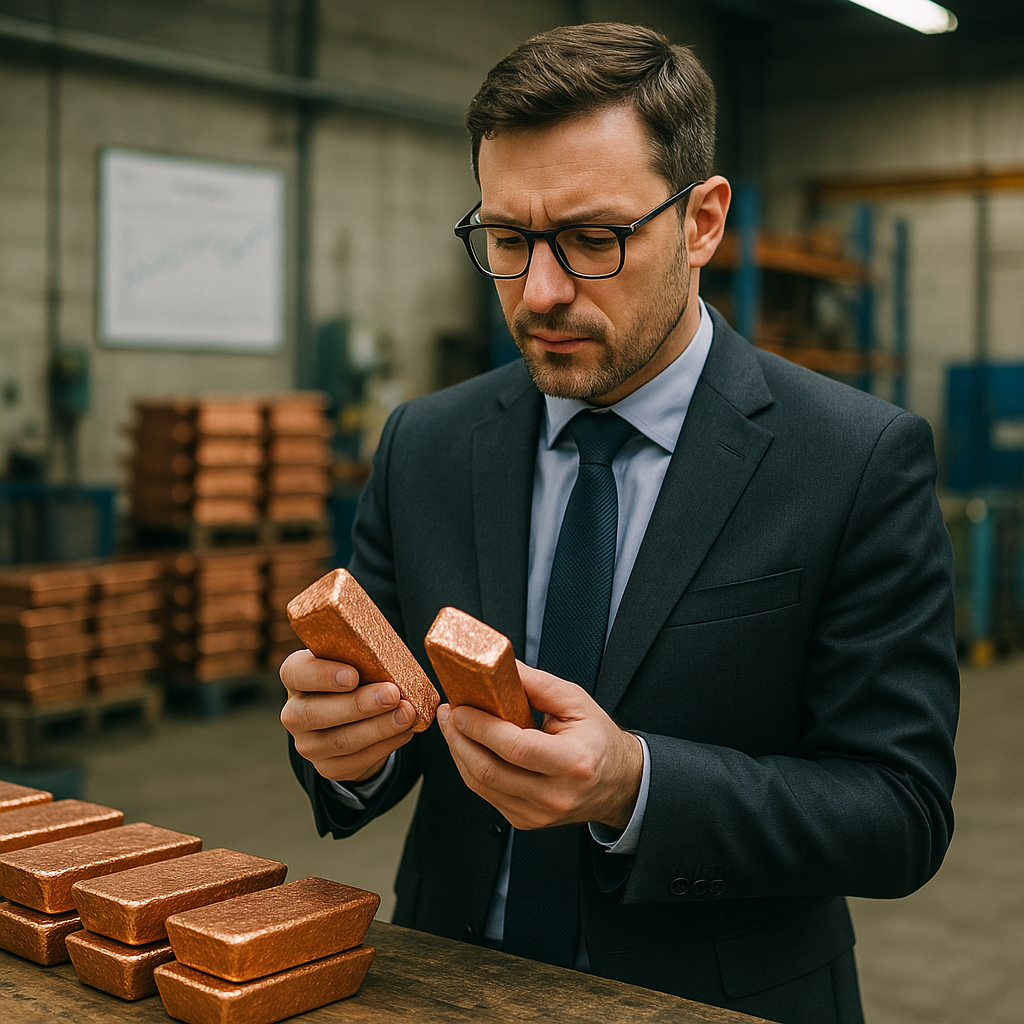5901 Botham Jean Blvd, Dallas, TX 75215
How to Recycle Copper Tubing: An Introduction
May 20, 2025Copper is a highly valuable metal in the recycling market. This bright reddish-brown metal, commonly found in plumbing systems and HVAC equipment, offers both environmental benefits and financial incentives. Recycling copper tubing can save up to 85% of the energy needed to mine and process new copper.
The recycling process starts by identifying copper pipes from renovation projects or equipment upgrades. Copper retains its value in recycling markets because it can be recycled repeatedly without losing its essential properties. This infinite recyclability makes copper tubing ideal for sustainable waste management.
The process is straightforward but requires attention to detail. First, find a reputable metal recycling facility that handles copper. Then, prepare your materials by removing non-copper components like fittings, solder, and insulation to maximize value. Finally, transport the prepared copper to the recycling center, where it will be melted down and transformed into new products for construction, electronics, and other industries.
How Do You Prepare Copper Tubing for Recycling?

Proper preparation of copper tubing is essential for maximizing its recycling value. Recycling centers pay premium prices for clean copper free from contaminants. The preparation process involves several key steps to ensure the copper reaches its highest potential value.
Collecting and Sorting
Begin by gathering all your copper pipes from plumbing projects, renovations, or demolitions. Sort them carefully by type. The most valuable copper pipes are those classified as #1 copper—completely clean and free from soldering, paint, and other materials.
Less valuable but still recyclable are #2 copper pipes, which include those with minor contaminants such as soldering or light coatings. Keeping these categories separate ensures you receive the best possible price for each type.
Removing Fittings and Attachments
Use appropriate tools to remove any non-copper components attached to the pipes. Pipe cutters work best for precise removal of brass fittings and connectors. Wrenches help detach stubborn fittings without damaging the copper.
Remove all solder joints where possible. This process increases your copper’s value since pure copper fetches higher prices than copper with solder attachments.
Cutting to Manageable Lengths
Cut longer copper pipes into sections of 2-3 feet. This makes transportation easier and helps recycling centers process the material more efficiently. Using a proper pipe cutter creates clean cuts without crimping the ends.
Many recycling facilities prefer uniformly sized pieces. Consistent sizing streamlines their melting and processing operations.
Cleaning the Copper
Thoroughly clean your copper pipes to remove any contaminants. Wipe down the exterior to remove dirt, grease, and debris. For pipes with stubborn residue, a mild soap and water solution works well.
For pipes with paint or protective coatings, use a wire brush or paint scraper to remove these materials. Clean copper not only increases value but also reduces energy consumption during recycling.
Final Sorting by Grade and Size
After cleaning, organize your copper pipes by both grade and size. This final sorting step makes the recycling center’s job easier and often results in better pricing for your materials.
Check each pipe for uniformity of material. Ensure they are made entirely of copper and not composite materials. Some newer plumbing systems use copper-coated pipes that have less recycling value than solid copper.
[[artifact_table]] Common tools needed for copper pipe preparation [[/artifact_table]]Safety Considerations
When preparing copper for recycling, wear protective gloves to prevent cuts from sharp edges. Work in a well-ventilated area, especially when removing solder or other materials that might release fumes.
Handle cutting tools with care to avoid injuries. Place cut pieces in sturdy containers to prevent scattered sharp edges that could cause accidents.
What Is the Process for Recycling Copper Tubing?

The recycling process for copper tubing involves several stages that transform old pipes into new, high-quality copper products. This efficient process makes copper one of the most recyclable materials.
Collection and Preparation
Before melting begins, copper tubing must be collected and prepared. Recycling facilities sort copper pipes by quality and remove any fittings, solder, or insulation that might contaminate the final product.
For optimal recycling results, copper pipes should be clean and separated from other materials. This preparation ensures the recycled copper meets stringent quality standards.
Melting Process
Once sorted and cleaned, copper pipes enter a high-temperature furnace. Temperatures rise to melt the copper completely, separating pure copper from remaining impurities.
During melting, impurities rise to the surface where they are removed. The process resembles water purification, with contaminants separating from the pure substance under specific conditions.
Recycled copper requires a longer dwell time in the melting furnace compared to virgin copper cathodes. This ensures impurities are removed before moving to the next stage.
Refining the Molten Copper
After melting, the copper undergoes refining to meet high-quality standards. This process removes lingering impurities and adjusts the composition if necessary.
For especially contaminated copper, electrolytic refining may be used, producing copper that meets demanding application standards.
The refining process is critical because it determines whether the recycled copper can be used for electrical applications, which require the highest purity, or for other uses.
Casting Into New Products
The final stage transforms the refined molten copper into usable forms. The liquid copper is cast into shapes like ingots, billets, or directly into new products.
These forms become raw materials for manufacturing new copper pipes, wires, roofing materials, and other products. The versatility of recycled copper is valuable across numerous industries.
Modern casting techniques ensure the recycled copper maintains consistent quality throughout the finished product.
Quality of Recycled Copper
The remarkable aspect of copper recycling is that the final product is virtually indistinguishable from newly mined copper. Recycled copper retains all desirable properties of virgin copper including conductivity, corrosion resistance, and durability.
This quality consistency explains why copper can be recycled infinitely without degradation. Unlike many materials that lose quality with each cycle, copper maintains performance characteristics regardless of how many times it’s recycled.
The recycling process uses up to 85% less energy than extracting and processing new copper, making it both economically and environmentally beneficial.
[[artifact_table]] Comparison of Energy Usage and Cost: Recycled vs. Virgin Copper [[/artifact_table]]How Can You Maximize the Value of Recycled Copper Tubing?

Copper tubing is a highly valuable material in the recycling market. Proper preparation and timing can significantly increase your returns when recycling this versatile metal. Understanding market dynamics and processing your copper correctly can substantially boost profitability.
Clean and Sort Your Copper
Thorough cleaning of copper tubing is essential for maximizing value. Remove fittings, solder, paint, coatings, or insulation from the pipes. Clean copper free from contaminants can fetch up to 50% more than contaminated materials.
Sorting copper by grade creates another opportunity to increase value. Scrap yards typically recognize several grades, including #1 copper (clean with minimal contamination) and #2 copper (containing paint or solder). The price difference between these grades can be significant.
For copper tubing specifically, removing brass fittings and other attached metals ensures proper classification. Use tools like pipe cutters or wrenches to detach these components without damaging the copper.
Stay Informed About Market Prices
Copper prices fluctuate based on global economic conditions, supply-demand dynamics, and currency exchange rates. These fluctuations can be substantial, with prices varying by several dollars per pound over short periods.
Monitor current market rates before selling your copper tubing. Many recycling facilities post their current prices online, allowing for comparison shopping. Some recyclers offer price-matching or special rates for regular customers.
Industry publications and online resources track copper market trends. This information helps you time your sales more strategically, potentially increasing returns by selling during price upswings.
Consider Volume and Transportation
Selling larger quantities of copper tubing often results in better pricing. Recycling facilities frequently offer bulk pricing for significant amounts, making it worthwhile to accumulate material before selling.
When transporting copper tubing, proper bundling and organization streamline the process. Cut pipes into manageable lengths and bundle similar grades together using strong wire or straps. Store bundles in a dry area before transport to prevent oxidation that could lower value.
Calculate transportation costs against potential profits. For smaller amounts of copper tubing, the fuel costs might offset any price advantages from more distant recycling centers.
Maintain Documentation
Keep detailed records of your copper tubing inventory, including weight, grade, and condition of each batch. This documentation helps track your recycling efforts and provides important reference points for future transactions.
Request receipts for all transactions, noting the weight, grade assessed, and price paid. These records help identify patterns in pricing and can be useful for tax purposes in some circumstances.
Developing relationships with reputable recyclers ensures fair pricing and consistent service. Established relationships often lead to better rates and more accurate grading of your materials.
| Location | Date | Price (USD/lb) |
|---|---|---|
| Elizabethtown, Kentucky | 05/18/25 | $3.20 |
| Fremont, Michigan | 05/16/25 | $3.35 |
| Portland, Oregon | 05/15/25 | $3.62 |
| Oklahoma City, Oklahoma | 05/15/25 | $3.40 |
| Oshawa, CA | 05/14/25 | $3.44 |
| Woodinville, US | 05/13/25 | $3.31 |
| San Bernardino, California | 05/12/25 | $3.36 |
Value-Added Processing
Consider additional preparation steps that might increase value. For copper tubing with insulation, mechanical stripping can upgrade your material from a lower to higher grade classification. Wire strippers specifically designed for this purpose work efficiently without damaging the copper.
Removing tarnish or surface oxidation can sometimes improve grading and value. Simple cleaning with wire brushes or mild solutions can make a difference in how your copper is classified.
Always prioritize safety when processing copper materials. Use appropriate protective gear when cutting or cleaning copper tubing to prevent injuries or exposure to contaminants.
Conclusion: The Impact of Recycling Copper Tubing
Recycling copper tubing has a significant environmental and economic impact. It greatly reduces the need for mining operations that harm natural ecosystems and produce pollutants. The process uses up to 85% less energy than extracting new copper, which directly results in fewer greenhouse gas emissions and a smaller carbon footprint.
The financial benefits are equally compelling. Recycled copper retains nearly its full value, often achieving 90-95% of the price of newly mined copper. By properly preparing—removing fittings, cleaning pipes, and sorting by quality—individuals and businesses can maximize returns while supporting a sustainable circular economy.
For your copper recycling needs, contact Okon Recycling at 214-717-4083. Their expert team can help you prepare and recycle your copper tubing, ensuring you receive fair compensation while making a positive environmental impact.
